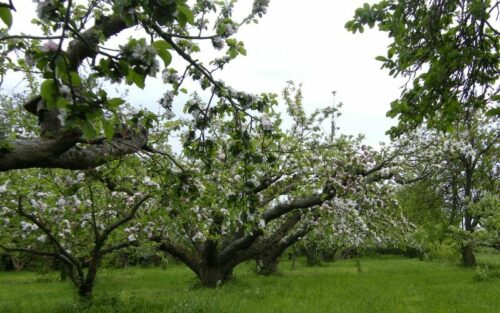When Should Rhododendrons be Pruned? Rhododendrons should be pruned post-flowering and this is the best time to do so.
The rhododendron is very popular among the shrubs in several landscapes.
It is an eye-appealing shrub that has lush foliage and lovely blooms. A rhododendron has dense branches, lots of flowers, and is beautiful in shape. These rhododendrons need pruning to grow well, though they need not be so often in their natural setup. However, occasional trimming can make these shrubs shape, rejuvenate, and maintain well.
WHEN SHOULD RHODODENDRONS BE PRUNED?
This is because this way you do not eliminate any flowering buds for the subsequent year. During pruning, ensure to prune back until a growing point.
This is very essential to maintain this shrub healthy.
As per the majority of landscaping experts, the best time to prune a rhododendron is during late winter as this is when this shrub is dormant.
The other time when you can prune this shrub is between the last frost of spring and the first frost of fall. This is when the spa is less and so this time works well too.
WHEN NOT TO PRUNE?
It is not recommended to prune right after its lush growth in spring.
This is because the new foliage is getting hard. This is considered the worst time to prune a rhododendron.
When Should Rhododendrons be Pruned?
Pruning a rhododendron has lots of benefits. Pruning helps in lush foliage.
It aids in dense branching. It gives abundant flowers to the shrub.
THE PRIMARY REASONS TO PRUNE A RHODODENDRON ARE:
- Shaping
- Maintenance
- Rejuvenation
SHAPING
Shaping increases the shrub’s form and natural habitat.
You can shape down by following the branch to the last set of leaves down leaving the ones you wish to keep.
Cut above the leaves whorl to about 1/4th inch of the leaf at the topmost within the cluster.
ITS IMPORTANCE-Pruning for shaping assists and enhances dense branching and controls plant height or width.
Shaping rhododendrons is for developing the pleasing factors of the shrub’s form. Avoid shaping for very large or leggy rhododendrons.
Shaping helps in plants’ appearance and enhances branching at the growth spots.
Each branch represents leaf whorls that have grown over a year.
BEST TIME-The best time to do shaping pruning is in late winter during the shrub’s dormancy.
This will ensure an overall growth season for the new emerging of stems.
MAINTENANCE
Pruning eliminates dead wood and old flowers.
The flower clusters worn old and dead are called trusses.
Eliminating the diseased or dead shrub parts make the branch healthy in its wood. Cut the base of the branch.
It is IMPORTANCE-By snipping the old flower trusses and base help in focusing the plant’s energy on generating growth.
A seed forms from the trusses, so the energy wastage on the spent trusses is carried out with pruning.
The precious energy thus is available for vegetative growth.
BEST TIME- A rhododendron should be pruned at least once every year for this maintenance.
This is best when the flowers fade and before new growth flush.
REJUVENATION PRUNING
Rejuvenation pruning is done for the drastic cutting of old wood.
This is done by making a cut above the shrub’s latent bud or above a bud’s cluster.
It involves cutting of primary branch of the shrub.
In extreme cases, cutting a rhododendron to almost 6” to the ground is recommended.
ITS IMPORTANCE- This pruning is best for shrub restoration which has overgrown, leggy, and unattractive.
Several hybrids and species of rhododendron are severely pruned.
This way they rejuvenate and become as good as new.
This pruning eliminates the majority of the branches motivating and triggering a new flush of growth from older leafless stems.
The new flush of growth matures into a new branch framework.
This can be then shaped in time to generate a stunning shrub.
BEST TIME-Rejuvenation pruning is best to carry at the time of winter as this shrub is dormant during this time.
The three pruning types are simple to do.
All of them result in a more attractive and healthier regrowth.
Rhododendrons are forgiving and regenerate eventually.
CONCLUSION
Rhododendrons should be pruned when their blooms start fading.
They can be pruned in late winter when the shrub is dormant.
Rhododendrons should be pruned for a well-developed and healthier shrub.
They regenerate with denser branches, lush foliage, and plenty of blooms upon pruning at the right time.


